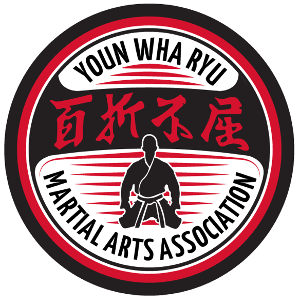Youn Wha Ryu Martial Arts Association Blog Post
Technique, Speed, and Power
Remember back when you were a white belt. The first thing you learned was how to "C " step, how to block, how to kick, and how to punch. Basic technique is probably the most important thing you will learn as a martial artist. Youn Wha Ryu Martial Arts starts with the basic techniques that allow you defend yourself if you are being bullied or attacked. Using poor technique is not only ineffective, it can lead to injury. Technique is the means of employing your power to best effect...without sacrifice of either speed or accuracy. But learning and improving basic technique is not only for the beginners. Think back to your last class, when Master Ceth Jordan leads basic technique does he have the Black Belts sit down and take a break? Of course not, you should always try to improve your basic technique because advanced techniques are ineffective if you do not include the basic techniques you already know.
I cannot count the number of times when doing kicking and defense drills that I have heard Master Ceth say to a student, "that looks good; now do it faster". Take that as a compliment. If you are doing the technique correctly than you should try to add speed. To be a successful martial artist, you need a lot of toughness and a good understanding of the basic techniques to outfight your opponent. But you also need exceptional speed- fights are won or lost in an instant — and the endurance to keep it up for an entire match. If your goal is to increase the power of your attack, then it beneficial to increase the speed of your attack. Not only will it give your attacks more kinetic energy, thus more potential of damage, more speed will also make your attacks harder to react to. During my last test I got the pleasure of sparring with Master Jake Ramsey. During the sparring match he would lift his knee as if doing a front snap kick. When I went to block down, he would quickly change it to a round house and go over my block. He introduced his foot to my head, and I fell for it twice. That is a good example of using speed to change the attack before the opponent has time to react.
Power (strength and speed) is a measure of how much energy is created, the size of the force applied and the speed at which it is applied. So with that, as your technique improves and you add speed, you will also be increasing power. Here is where you have to be careful. Although not listed in the title, there is another consideration which is control. During testing it is common for the Colored Belts to spar with a Black Belt. Guy Helm is one of the best instructors for this sparring. He is not only excellent at sparring, he is also good at making the opponent look good. You want your Colored Belts to experience what it feels like to make solid contact with their kicks and punches. The most fun is when you get to spar the Green Belts. The Green Belts are really starting to develop speed and power, but sometimes they are still working on their control. When I spar Colored Belts during testing, sometimes I will lift my arms up higher than normal to expose my sides and chest protector. Usually after letting them "experience" that contact a few times I am ready to go back to normal defending.
To sum up my rambling, always work to improve your basic technique. Advanced technique builds on the basic technique you learn at white belt and continue to improve upon. Add speed to your training. Try to get your kick or your punch to the target faster. When increasing your speed, you will also increase your power. Exercise control as your speed and power improves. And again it goes back to technique. If you have more speed and power, but your basic technique is being sacrificed, you are going to end up injuring yourself. Nothing is worse than throwing a hard and fast front snap kick to an elbow with your toes pointed straight up, now wrap that broken toe and get back to training!
Floyd Massey
2nd Dan Black Belt
Youn Wha Ryu Martial Arts Association
